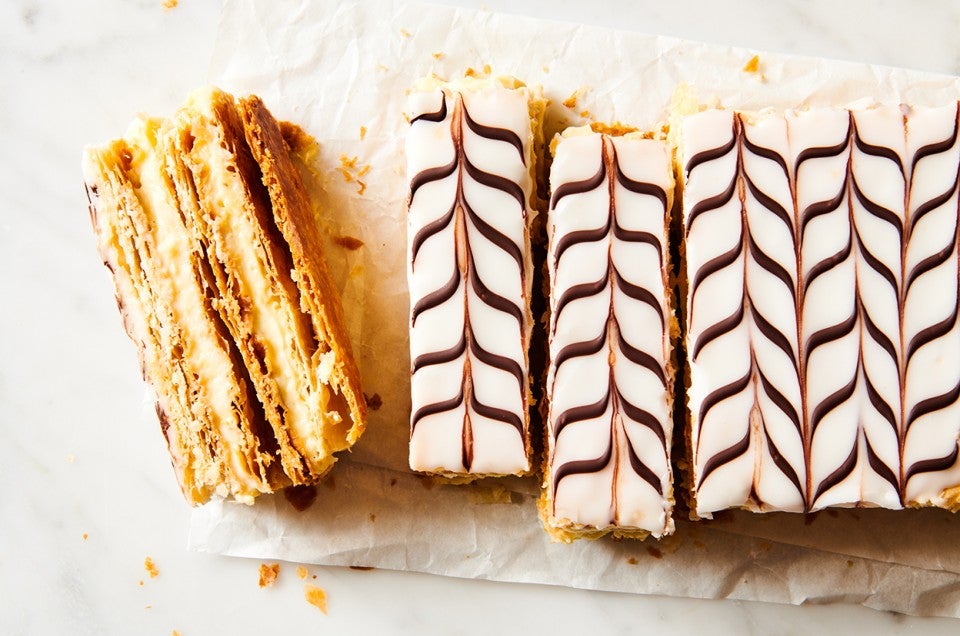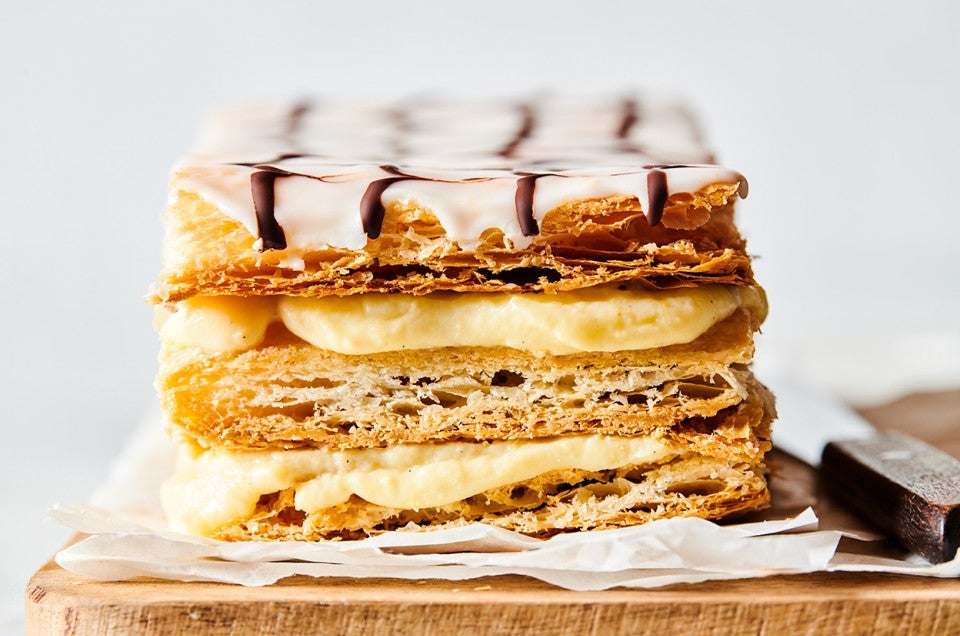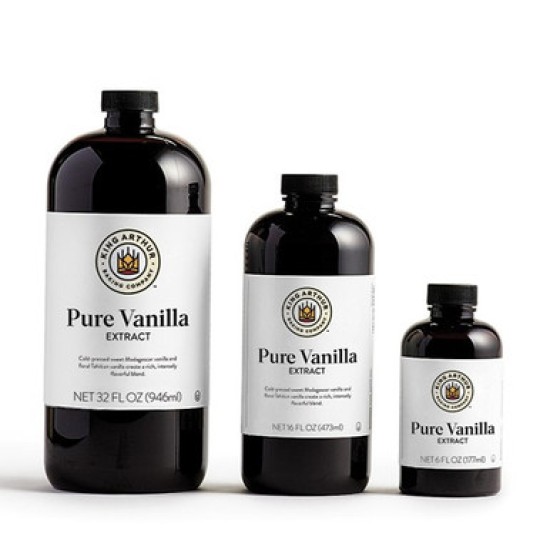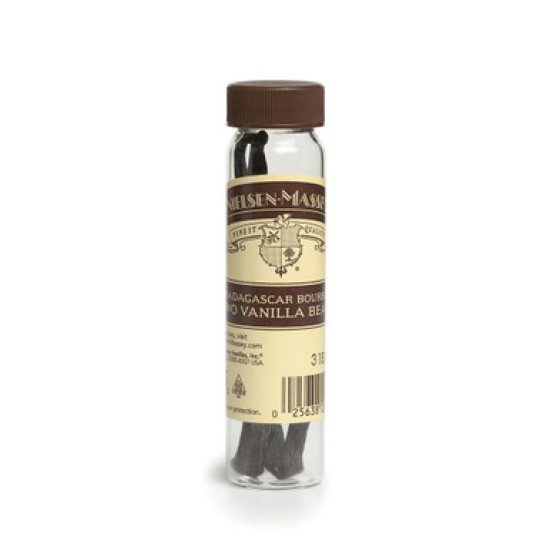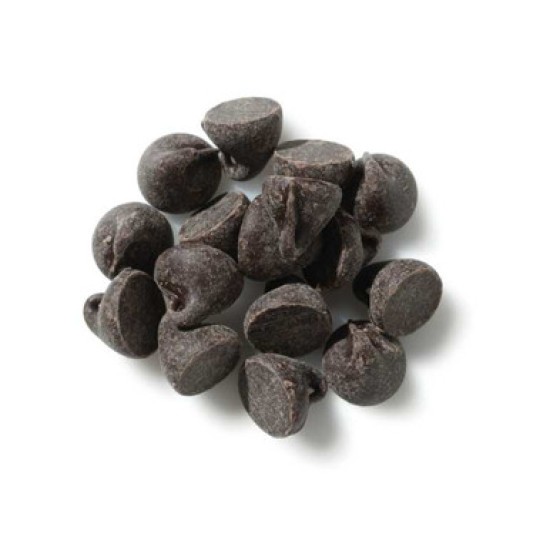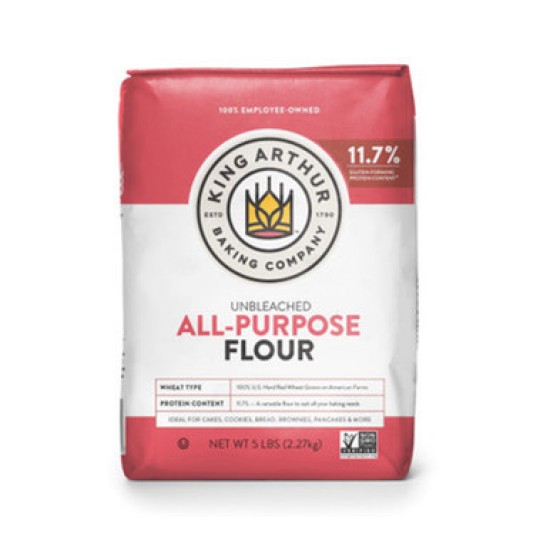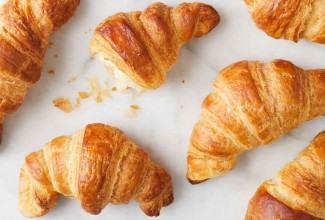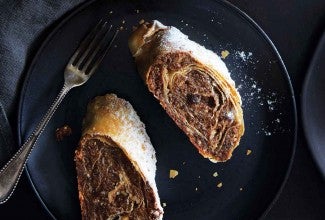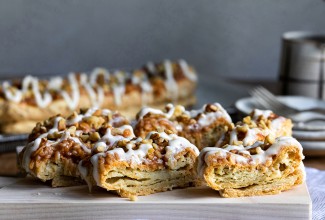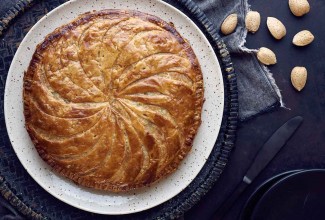-
To make the filling: In a medium-sized saucepan, stir together 1 1/2 cups (340g) of the milk, sugar, salt, and vanilla bean. (If you're using vanilla extract you’ll add it at the end.) Bring to a simmer over medium heat, stirring to dissolve the sugar.
-
Meanwhile, in a medium bowl whisk the cornstarch and egg yolks with the remaining 3/4 cup (170g) milk until smooth and lump-free.
-
Slowly whisk about one-third of the hot milk mixture into the egg mixture, then pour the egg/milk mixture back into the remaining simmering milk. Bring to a boil, stirring constantly with a whisk, until the mixture thickens and the boiling bubbles reach the center of the saucepan.
-
Remove the pan from the heat and strain the filling through a fine strainer into a bowl.
-
Stir in the butter and vanilla extract. Place a piece of plastic wrap directly on top of the surface, then refrigerate until cool.
-
To prepare the pastry: On a lightly floured surface, roll the dough into an 11” x 14” rectangle about 1/8” thick.
-
Transfer the dough to a parchment-lined baking sheet by gently folding it in half, then in quarters. Place the dough on the prepared baking sheet and unfold.
-
Prick (dock) the dough all over with a fork.
-
Cover the dough with a sheet of parchment paper, then put it in the refrigerator to chill for at least 30 minutes (or as long as overnight).
-
Preheat the oven to 375°F.
-
Remove the chilled dough from the refrigerator and place another flat-bottomed baking sheet on top of the parchment.
-
Bake the dough sandwiched between the two pans for 25 minutes. Baking the pastry under the weight of another pan will limit the vertical expansion of the layers and create an incredibly crispy pastry sheet that can carry the weight of the rich pastry cream on top. (Covered baking also allows for slow caramelizing of the dough, yielding a deep, rich flavor.)
-
Remove the top baking sheet and the parchment underneath it, and return the uncovered pastry to the oven to continue baking for another 15 minutes, until it's a deep golden brown and baked all the way through.
-
Remove the pastry from the oven and carefully transfer it to a rack to cool.
-
To assemble: Using a serrated knife, carefully trim the edges of the baked pastry sheet to make a 10” x 12” rectangle.
-
Cut the rectangle into thirds, to make three 10” x 4” strips. Select the best-looking strip of pastry and set it aside (this will become the top layer).
-
To make the glaze: Place the confectioners’ sugar in a bowl and stir in the cream and corn syrup.
-
Working with the melted chocolate while it's still warm (around 100°F to 110°F), transfer it to a pastry bag. (A small zip-top bag can also work here.) For tips, see our blog post on how to melt chocolate.
-
Snip off the tip of the pastry bag or one of the corners of the zip-top bag to create a small opening about 1/16" wide. (You don't need to be exact here, but the opening should be quite small for best control.) Alternatively, make a cornet out of parchment.
-
Working quickly, pour the white glaze over the “good-looking” reserved pastry strip, covering it completely and smoothing with an offset spatula.
-
Before the white glaze sets, pipe the chocolate glaze lengthwise onto the white-glazed strip, making parallel lines about an inch apart. With a toothpick or the tip of a paring knife, draw alternating lines perpendicularly through the chocolate stripes to pull them into a pattern.
-
Carefully place the iced pastry on a rack to dry.
-
Spread or pipe the chilled pastry cream evenly over the two remaining strips of pastry; it should be about 3/4" thick. If you’re using berries, push them down into the filling on one of the strips, then top with the other filled strip.
-
Place the iced strip on the top. Refrigerate the pastry for at least 30 minutes (or up to 12 hours) before serving; this rest will allow it to set up, making it easier to cut.
-
Slice the pastry crosswise into eight pieces, each about 1 1/4" wide. Serve chilled, or warmed just slightly at room temperature.
-
Storage information: Napoleons are best served the day they’re assembled. While still delicious after one or two days in the refrigerator, the pastry will lose its crispiness. See “tips,” below, for make-ahead instructions.
